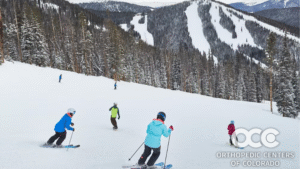Colorado’s stunning trails draw hikers, trail runners, and outdoor enthusiasts from all over the state—and for good reason. From steep alpine climbs to winding foothill paths, there’s no shortage of adventure. But along with the rewards of outdoor activity come risks: foot and ankle pain in Colorado is one of the most common complaints among those who spend time on the trails.
Whether you’re a weekend hiker or a seasoned trail runner, knowing how to prevent and treat common injuries can help keep you moving safely.
Common Hiking and Trail Running Injuries
1. Ankle Sprains
- What happens: A sudden twist or uneven surface can overstretch or tear the ankle ligaments.
- Symptoms: Pain, swelling, bruising, and difficulty bearing weight.
- Treatment: Early ankle sprain treatment in Colorado follows the RICE method (Rest, Ice, Compression, Elevation), but it’s critical to see a specialist if swelling persists or walking is painful.
2. Plantar Fasciitis and Arch Pain
- What happens: Overuse or improper footwear leads to inflammation of the plantar fascia along the bottom of the foot.
- Symptoms: Sharp heel pain, especially with the first steps in the morning.
- Treatment: Supportive footwear, stretching, and physical therapy are effective in most cases.
3. Stress Fractures
- What happens: Repetitive impact during long hikes or runs creates tiny cracks in the bones of the foot.
- Symptoms: Localized pain that worsens with activity and improves with rest.
- Treatment: Rest, protective footwear, and in some cases, immobilization with a boot.
4. Achilles Tendinitis
- What happens: Overtraining or climbing steep grades puts strain on the Achilles tendon.
- Symptoms: Pain and stiffness in the back of the heel, especially in the morning.
- Treatment: Stretching, activity modification, and gradual return to activity under medical guidance.
Injury Prevention: Stay Strong on the Trails
Colorado’s terrain demands preparation. Use these trail running injury prevention strategies before you head out:
- Choose Proper Footwear: Trail shoes with ankle support and good traction reduce slips and twists.
- Warm Up & Stretch: Focus on calves, Achilles, and arches before strenuous activity.
- Build Strength: Incorporate balance and stability exercises to support foot and ankle health.
- Know the Trail: Watch for uneven surfaces, loose rocks, and sudden grade changes.
- Listen to Your Body: Foot or ankle pain is a warning sign—not something to push through.
When to See a Specialist
If you experience persistent hiking injuries in your foot or ankle, or if pain interferes with walking, running, or daily activities, it’s important to seek expert care. Untreated injuries can lead to chronic issues and longer recovery times.
Comprehensive Foot and Ankle Care at OCC
At Orthopedic Centers of Colorado, our fellowship-trained specialists provide expert care for all types of foot and ankle pain—from sprains and fractures to chronic tendon conditions. With the largest network of orthopedic clinics, physical and occupational therapy centers, and advanced imaging facilities across the Front Range—from Colorado Springs to north Denver—you’re never far from the care you need.
Take the first step toward recovery. Schedule an appointment today with one of our dedicated foot and ankle specialists.







